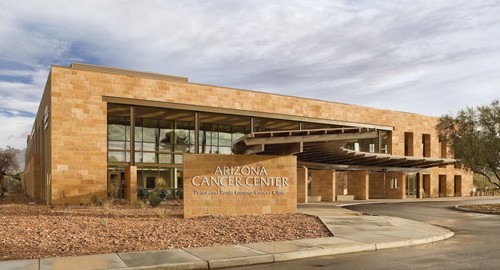Three UA professors were appointed to breast cancer chairs at the Arizona Cancer Center after Fenton L. Maynard estate provided the center with $5 million.
The three appointees are Drs. Arthur Gmitro, Bernard Futscher and Alison Stopeck.
Futscher is the co-director of both the Genomics Shared Service and Cancer Biology & Genetics Program at the Arizona Cancer Center as well as a UA professor of pharmacology and toxicology.
Stopeck is the director of the Clinical Breast Cancer Program and is an associate professor of medicine at the UA.
The money the chairs receive comes from the interest off of the endowment, which equates to about $40,000 per year according to Gmitro, co-director of the Cancer Imaging Program and UA radiology and optical sciences professor.
Maynard developed a friendship with Dr. David Alberts, director of the Arizona Cancer Center. Maynard decided to donate the money because his wife, Margaret, died from breast cancer, and the couple had no children.
Along with those appointed as chairs, two other researchers will also receive endowments. In total, five researchers and their teams will each eventually receive $1 million from the endowment.
“”It’s sustaining funding for research, so our researchers, our physician scientists, can focus on doing their work in the laboratory and not seeking grant funding,”” said Sara Hammond, public affairs director for the Arizona Cancer Center.
Hammond said the $5 million endowment is the largest gift the cancer center has ever received.
“”Dr. Stopeck, Dr. Futscher and Dr. Gmitro are all leaders in their fields,”” Hammond said. “”It’s a feather in our cap for the cancer center to have such a generous gift.””
Stopeck, for example, works on novel markers such as MRIs and blood markers, to predict a person’s response to chemotherapy.
“”(Endowments) are great opportunities because what endowments do is they generate a small amount of money year after year after year,”” Stopeck said.
She said the endowment allows her team of researchers to try experiments and ideas that are not currently funded.
With endowed money, researchers don’t have the same limitations they do with grants.
“”With grant money it’s very difficult to get money to do projects or initiate projects, because they want to see a lot of preliminary data. Basically the common thought on a grant is you almost have to have completed the grant to get the grant,”” Stopeck said.
Stopeck said she’s excited about the opportunity to be more creative in her research and take more chances. She said this might actually lead to significant discoveries in breast cancer research, and she plans on using the money to hire a part-time technician who’s extremely knowledgeable in flow psychometry to help the team move forward with research on circulating tumor cells in the blood. They want to learn more about their origin and how drugs affect them. Stopeck also wants to invest in a novel imaging technique, called functional imaging, which would also show how cells respond to therapy.
She said the two most important elements in advancing research, allowing the university to keep great researchers and allowing them to be creative, is accomplished by the endowment.
Gmitro’s research will also reap the benefits.
He has been working with both MRI and optical imaging technology. He has also been working on a confocal microendoscope, which is an instrument that essentially allows a microscope to see tissue inside the body, rather than taking tissue out of the body.
With a conventional biopsy, only a few pieces of tissue are extracted and examined. Tissue samples from the diseased area may not be extracted, which would cause an error in diagnosis. The confocal microendoscope allows for better visualization and better diagnosis.
“”We’ve been applying (the confocal microendoscope) in the context of a number of disease processes. By modifying the instrument to make it even smaller, it has the potential to work in terms of breast imaging as well,”” Gmitro said.
He added that it is an honor to be named to the breast cancer chair and that the monies coming from the endowment will certainly help improve his research.









